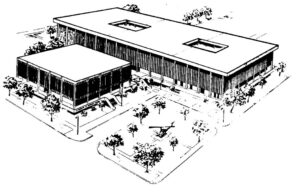CORRESPONDENCE COURSE OF
THE U.S. ARMY MEDICAL DEPARTMENT CENTER AND SCHOOL
SUBCOURSE MD0802 EDITION 200
INTRODUCTION

One of the most important areas of study for the pharmacy specialist is
pharmaceutical calculations. A person might know a great deal about pharmacology,
but if he cannot perform a pharmaceutical calculation, that knowledge cannot be applied in a practical way. To prepare and dispense medications, you must be capable of
performing a variety of pharmaceutical calculations. You must be constantly aware of one fact-an error made in a dosage calculation can harm a patient. The study of this subcourse will help give you the knowledge and skill required to perform many types of dosage calculations.
This subcourse is designed to focus on the systems of weights and measures commonly used in the pharmacy. Examples in the text include drugs actually dispensed in outpatient pharmacy settings.
Learning pharmaceutical calculations is like building a house; one part is dependent on the other and a good firm foundation supports it all. Memorizing the formulas and equivalents, developing a well-rounded knowledge of basic mathematics, and practicing what you are learning (that is, solving practice problems) will help you successfully complete this subcourse. Although not required, it is advisable for you to have completed Subcourse MD0801, Prescription Interpretation, before attempting this subcourse.
As you study this subcourse you will notice that practice problems are provided at the end of each section. It is important that you solve these practice problems before you go to the next section. Furthermore, you should complete each practice problem before you attempt to take the final examination.
Subcourse Components:
This Subcourse consists of 3 lessons. The lessons are:
Lesson 1. Pharmaceutical Calculations I.
Lesson 2. Pharmaceutical Calculations II.
Lesson 3. Pharmaceutical Calculations III.
Here are some suggestions that may be helpful to you in completing this subcourse:
–Read and study each lesson carefully.
–Complete the subcourse lesson by lesson. After completing each lesson, work the exercises at the end of the lesson
–After completing each set of lesson exercises, compare your answers with those on the solution sheet that follows the exercises. If you have answered an exercise incorrectly, check the reference cited after the answer on the solution sheet to determine why your response was not the correct one.
———————-
Download Here
Prescription Interpretation
Length: 156 Pages
Estimated Hours to Complete: 10
Format: PDF file
Size: 771 KB
—————————-
Anyone may take this course. However, to receive credit hours, you must be officially enrolled and complete an examination furnished by the Nonresident Instruction Branch at Fort Sam Houston, Texas. Enrollment is normally limited to Department of Defense personnel. Others may apply for enrollment, but acceptance is not guaranteed.
—————————-
TABLE OF CONTENTS
INTRODUCTION
1 PHARMACEUTICAL CALCULATIONS I
Section I. Review of Basic Mathematics
Section II. Temperature Conversions
Section III. Prescription Interpretation
Section IV. Ratio and Proportion
Section V. The Metric System
Section VI. Common Systems of Measure
Section VII. Reduction and Enlargement of Formulas
Exercises
2 PHARMACEUTICAL CALCULATIONS II
Section I. Specific Gravity
Section II. Percentage Preparations
Section III. Dilution of Stock Preparations
Section IV. Alligation
Exercises
3 PHARMACEUTICAL CALCULATIONS III
Exercises
—————————-
Sample
LESSON ASSIGNMENT
LESSON 1 Pharmaceutical Calculations I.
TEXT ASSIGNMENT Paragraphs 1-1 through 1-44.
LESSON OBJECTIVES After completing this lesson, you should be able to:
1-1. Perform addition, subtraction, multiplication, and
division of whole numbers, fractions, and
decimals with 100 percent accuracy.
1-2. Convert from degrees Celsius to degrees
Fahrenheit and vice versa.
1-3. Convert between the various denominations of
each of the basic units of the metric system.
1-4. List the conversion factors for the common
systems which are most frequently used in the
pharmacy.
1-5. Reduce or enlarge pharmaceutical formulas as
required in the pharmacy.
1-6. Solve pharmaceutical problems using ratio and
proportion and conversion factors.
1-7. Perform pharmaceutical calculations using the
metric system.
SUGGESTION After studying the assignment, complete the exercises at the end of this lesson. These exercises will help you
to achieve the lesson objectives.
—————————-
Download Here
Prescription Interpretation
